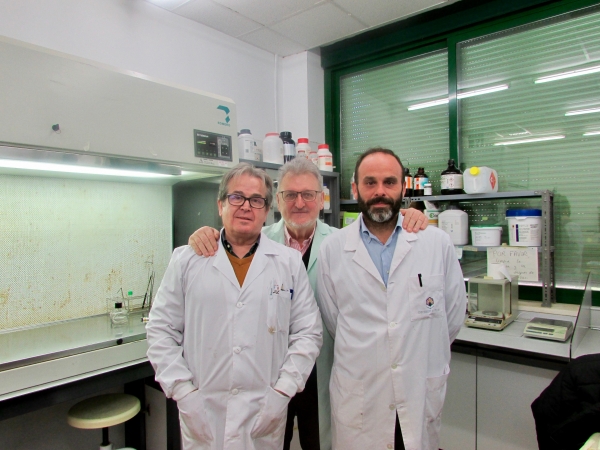Spain is the largest producer and exporter of strawberries in the European Union and one of the largest in the world, meaning this crop is strategic due to the financial profits it brings and the jobs it creates. Its taste and nutritional value make this vitamin-, mineral- and antioxidant-rich fruit one of the most sought-after fruits on the market. But humans are not the only species that consume strawberries; all kinds of pathogenic organisms take advantage of the nutrients this plant and its fruit have to offer when harvested and while ripening. In order to prevent infections from undesired pathogens, a wide range of pesticides are used in agriculture and applied regularly to crops, including strawberry crops. Currently, using these pesticides is the only real way to profitably sell this fruit on the global market.
The European project known as MED-BERRY, made up of nine organizations in five countries (Spain, Italy, France, Morocco and Turkey), is addressing new strategies to protect this fruit crop in the Mediterranean region, where its importance and trade are key. The final goal is to be able to reduce the use of pesticides and manage plant health emergencies, by means of using cutting-edge molecular strategies to develop new biofungicides and genetic improvement biotechnology, with the valuation of the available strawberry germplasm in the Mediterranean basin.
The Biotechnology and Plant Pharmacognosy (BIO-278) research group at the University of Cordoba (UCO), the only Spanish university organization in the consortium, is leading the two molecular approaches in biotechnological improvement within the five main lines of work in the project. In order to do so, they have researchers Rosario Blanco Portales and Enriqueta Moyano Cañete as well as researchers José Javier Higuera Sobrino, Antonio Rodríguez Franco, Juan Muñoz Blanco and José Luis Caballero, lead researcher in charge of the project at UCO, working on it.
Though they are studying strategies for different kinds of pathogens, the project is most thoroughly focused on Botrytis cinerea, Colletotrichum sp and Podosphaera aphanis, three especially repercussive microorganisms in the Mediterranean basin, due to the losses they cause and their ability to harm the fruit, not only during its development stage but also after being harvested, once the food is ready to be marketed.
The UCO team will explore two kinds of biotechnological techniques, among others. The first, known as intragenesis, combines different DNA fragments of the strawberry itself with an aim to increase its natural immunity against pathogenic infections. The second consists of designing biofungicides via siRNA molecules that block the pathogen’s action mechanism, silencing the genes responsible for both infection and infection growth.
“Thanks to previous research, we are familiar with some of the genes that these microorganisms use to infect others”, points out Biochemistry and Molecular Biology Professor José Luis Caballero. “Now, this scientific knowledge can be used to design molecular systems based on gene silencing that can keep pathogens from causing infection. In this way, the biofungicide based on siRNA molecules can be sprayed on the plant or try to make the fruit itself produce these molecules that will impede the growth of infectious organisms”, explains the researcher.
The MED-BERRY project, scheduled to finalize in 2022, will have its first conclusive results next year. On its webpage - https://medberry-prima.eu/ - different research partners publish their research so that the sector can learn firsthand about the technological innovations and new biological fungicides. The project also has a Twitter account: @medberry10.
Â
The Med-Berry project - “Developing new strategies to protect strawberry crop in Mediterranean countries” (PRIMA-S2-2018-PCI2019-103396) is cofunded by the European Union under the PRIMA progamme and by the Ministery of Science, Innovation and Universities through the National Agency for Research under the PRIMA-S2-2018 and PCI2019 call, respectively.
Â
This article is part of the communication strategy designed by the International Project Office to divulge the international projects granted to the University of Cordoba.


